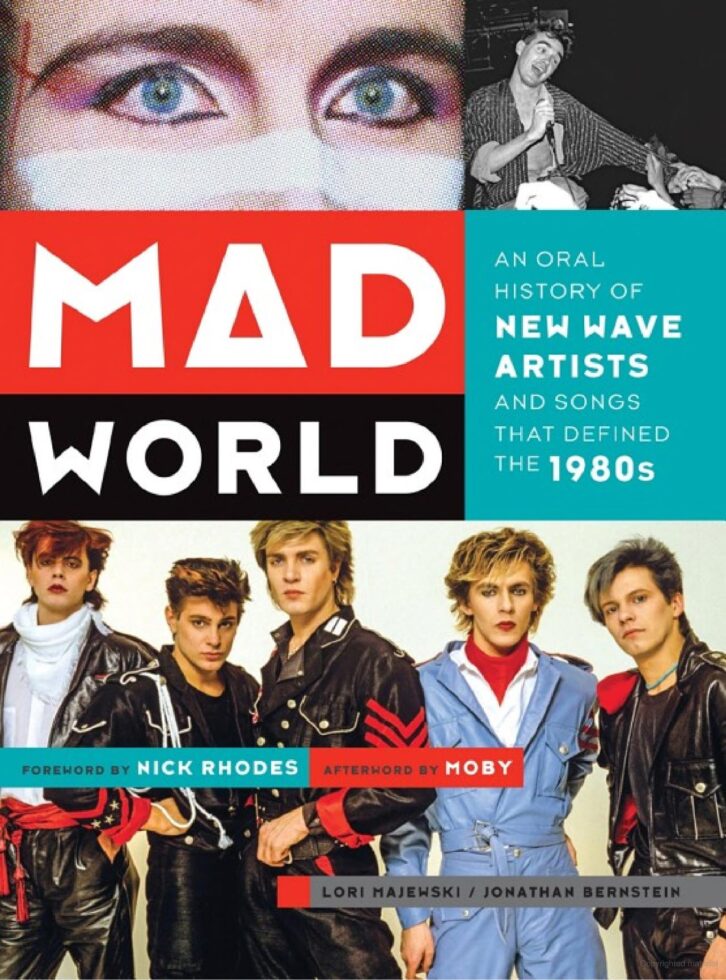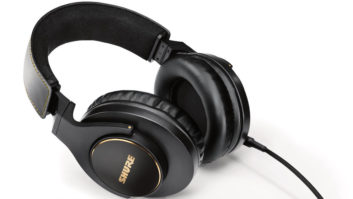
New Wave of the early 1980s may be best remembered for its synthesizers and sleek fashion, but its also marked a turning point where music technology stepped into the spotlight, thanks to music videos that were often shot in the studio. Likewise, artists from Devo to Gary Numan to Thomas Dolby used tech as cornerstones of their public images, simultaneously romanticizing gear and recording equipment even as they demystified it to some extent to their fans.
It’s no surprise then that the new book, Mad World: An Oral History of New Wave Artists and Songs that Defined the 1980s, captures plenty of in-the-studio stories as it interviews a list of acts that reads like a typical hour of MTV circa 1985, including Duran Duran, New Order, Tears For Fears, The Smiths, Echo and the Bunnymen, INXS, Simple Minds, Human League, Howard Jones, ABC, Depeche Mode, A-Ha and dozens more.
Many of the tales told underline the producers’ roles in creating the hits of the era, such as when the forward-thinking Psychedelic Furs went with a retro-minded producer, classic rocker Todd Rundgren, to record their first US hit, “Love My Way.” Singer Richard Butler recalls:
“When we went to work with Todd, “Love My Way” wasn’t the song you hear today. He said, “This song could be a great song, Richard, if you try and be less aggressive with it.” The idea of singing had been anathema to me. Then he came up with the idea of using Flo and Eddie [of The Turtles]. Even though I liked Marc Bolan and T. Rex [to whom Flo and Eddie lent their trademark harmonies], I didn’t know whether I loved the idea of these backup singers on the song. But [Rundgren] said, “If you don’t like them, we’ll take them off, I promise.” So we recorded it with Flo and Eddie, and it sounded great.”
“I loved [working with Rundgren]. It’s funny, because Andy Partridge [of XTC] apparently hated it. He came up to me in a coffee shop in New York and said, ‘How was your experience with Todd then?’ Andy Partridge thought he was over-controlling, but Todd consulted us every step of the way. He said, “What kind of sound do you want? Imagine for a minute you’re playing in a room: What kind of room do you want it to be? A club? A theater?’ We decided on a theater. We wanted it to be intimate and warm, of a certain size but not overblown.”
Conversely, there’s numerous tales of working with the wrong producer, too, as when A-Ha relates elsewhere how it recorded two versions of its trademark hit, “Take On Me,” the first being a lifeless version with name producer, Tony Mansfield [Aztec Camera, The Damned, Naked Eyes], or when Gary Kemp of Spandau Ballet recalls recording the band’s lone US hit, “True,” snarkily noting, “Trevor Horn was going to produce, but I don’t think he ever really got the idea of recording a band that was into controlling their own sonic destiny….”
Of course, some artists were also producers, like Midge Ure of Ultravox, who details his involvement in the classic charity single, Band Aid’s “Do They Know It’s Christmas?” as he relates how he wrote the music—and recorded most of the backing track—in his garden shed studio. While serious recording at home is a common occurrence today, it was virtually unheard of in 1984.
Given that the book interviews some three-dozen acts, there’s plenty of highs—as when Morrissey, Johnny Marr and Andy Rourke recall recording The Smiths’ landmark “How Soon Is Now”—and a fair number of lows, too, like the pages wasted on insipid squabbling between members of Kajagoogoo, the one-hit wonders behind “Too Shy.” Still, when the book explores where the artists are today, there’s surprisingly few “we wound up destitute and homeless”-type stories; while most look back on the era with fondness, they’re also pretty frank as they reassess their pasts—a trait not often associated with the glitzy New Wave acts.
While not an oral history in the tradition of the legendary Please Kill Me: The Uncensored Oral History of Punk or the mammoth I Want My MTV: The Uncensored Story of the Music Video Revolution, both of which wove interviews together to create overarching narratives, Mad World benefits from authors Lori Majewski and Jonathan Bernstein’s affection for their subject matter and in-depth knowledge of the era’s music. Packed with plenty of color photos and artists who don’t take themselves too seriously, Mad World is a great beach-read for the music-minded.
Mad World on Amazon







